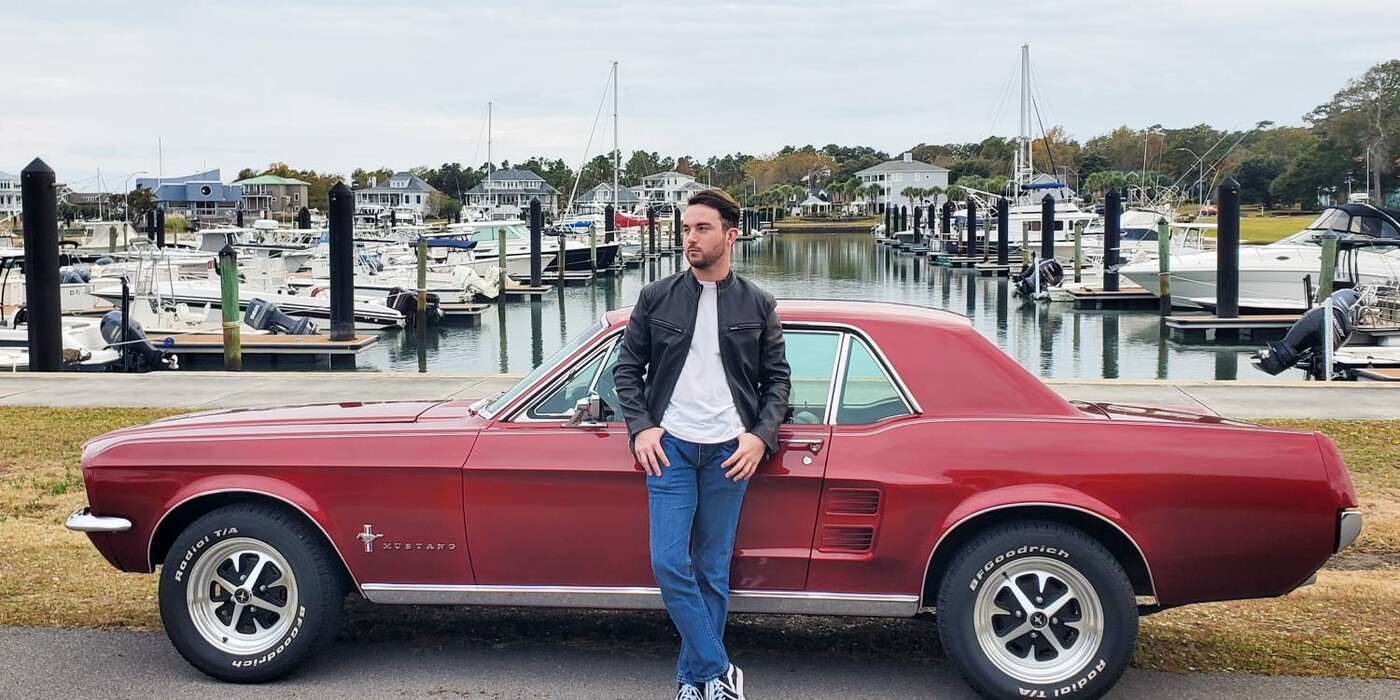Hampstead, NC native Harvey Squires was diagnosed with epilepsy at 14 years old. As his seizures worsened, Harvey’s parents sought care for him from doctors across the region. Anti-seizure medications weren’t effective and caused uncomfortable side effects. Then he went to Duke Health, where doctors surgically removed the small area of his brain causing the seizures. Harvey, now 21, hasn’t had a seizure since. He realized his dream of getting his driver’s license, and he’s looking forward to his future.
A Seizure at the Bus Stop
Harvey was getting off the school bus when he had his first seizure in 2016. "I suddenly couldn't walk," he said. "I crawled to the door and called my neighbor." A week later, Harvey was diagnosed with epilepsy and started anti-seizure medication.
Finding the Problem but No Solution
Harvey saw neurologists in Wilmington, Raleigh, and Chapel Hill over the next couple of years as his seizures became more frequent and dangerous. In 2018, he was diagnosed with a brain abnormality that developed in utero called periventricular nodular heterotopia. His doctors believed it was causing Harvey’s seizures. "They said, 'We think we know what it is, but we can’t do anything about it,'" Harvey’s father, Alex Squires said. "They referred us to Duke."
A Stepwise Approach to Epilepsy Treatment
Muhammad Zafar, MD, a pediatric epileptologist at Duke, and his colleagues evaluated then-16-year-old Harvey. Testing suggested his seizures were originating from both sides of his brain, so they recommended trying vagus nerve stimulation (VNS). The surgically implanted device sent electrical impulses to Harvey’s vagus nerve, reducing the number and severity of his seizures.
About a year after his VNS was placed, Harvey’s epilepsy started to ramp up again. "He started having blackout seizures," Alex said. "He would just drop like somebody hit a switch and bang his head on the pavement." Harvey remembers waking up on the ground and not knowing how he got there. "I could be walking and talking, perfectly fine. Then all of a sudden, I’m face down on the ground, and I don’t even know what happened," he said.
Harvey stopped surfing and fishing due to the frequency and intensity of his seizures. He was no longer able to perform his music in public. Harvey said time seemed to stand still for him, as his friends got their driver’s licenses, applied to college, and experienced life.
Epilepsy Surgery Offers Chance for a Cure
In March 2020, Harvey was admitted to Duke’s epilepsy monitoring unit to undergo more advanced testing. High-density scalp electroencephalogram (EEG) and PET scan results indicated Harvey’s seizure focus (where the seizures began) was more localized than originally thought. The next step was robot-assisted stereoelectroencephalography (SEEG). A Duke pediatric neurosurgeon used a robotic arm to place thin electrodes deep within Harvey’s brain. The electrodes recorded information about Harvey’s seizures over the next few days, and found each of his episodes started in the same part of the brain. Surgically removing that part of Harvey’s brain should eliminate his seizures, but there was a catch.
Weighing the Risks
Harvey’s seizure focus was in his occipital lobe, which controls vision. Surgery would likely affect his eyesight, giving him a blind spot. "I thought, do I want to live like this for the next 30 years, having seizures? Is this the life I want, or do I want to do something about it?" Harvey asked himself. With his parents’ blessing, he decided the benefits of surgery outweighed the risks.
Successful Epilepsy Surgery Leads to Seizure Freedom
In July 2020, doctors removed an area about the size of a golf ball from Harvey’s brain. Harvey went home two days later. Since the surgery, Harvey has been completely seizure-free. He lost a portion of his peripheral vision on his left side, as expected, but he said it’s a trade he’s glad he made.
Recently, Harvey got his driver’s license and a fully restored red 1967 Mustang. He is back to playing the guitar and drums, writing his own music, and surfing and fishing with his dad. He no longer needs anti-seizure medications. "I'm back to normal," Harvey said.





